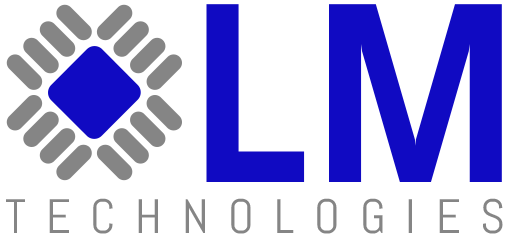Glossary
Bluetooth
A standard for the short-range wireless interconnection of mobile phones, computers, and other electronic devices.
Bluetooth Smart
Bluetooth Smart is not backward-compatible with the previous, often called Classic, Bluetooth protocol. The Bluetooth 4.0 specification permits devices to implement either or both of the LE and Classic systems.
In 2011, the Bluetooth SIG announced the Bluetooth Smart logo intended to clarify compatibility between low energy devices. Bluetooth Smart Ready indicates a dual-mode device compatible with both Classic and low energy peripherals.
Bluetooth low energy
Bluetooth low energy (Bluetooth LE, BLE, marketed as Bluetooth Smart) is a wireless personal area network technology designed and marketed by the Bluetooth Special Interest Group aimed at novel applications in the healthcare, fitness, beacons, security, and home entertainment industries. Compared to Classic Bluetooth, Bluetooth Smart is intended to provide considerably reduced power consumption and cost while maintaining a similar communication range.
Broadcom
Broadcom Corporation in Irvine, California, is an American fabless semiconductor company in the wireless and broadband communication business founded in 1991.
CSR
Wireless technology solutions company founded in 1999 providing audio, connectivity, auto & location products. CSR helps customers to create the world’s most desirable consumer electronics.
dBi
The forward gain of an antenna compared with the hypothetical isotropic antenna, which uniformly distributes energy in all directions. Linear polarization of the EM field is assumed unless noted otherwise.GHz
dBm
Is an abbreviation for the power ratio in decibels (dB) of the measured power referenced to one milliwatt (mW).
GHz
GHz may refer to: Gigahertz (GHz), a unit of frequency.
HyperCat
HyperCat is a consortium and standard driving secure and interoperable Internet of Things (IoT) for Industry.
The HyperCat specification allows Internet of Things clients to discover what data an IoT server has available. It is built on the same Web standards that are now common for that interface, i.e. HTTPS, REST/HATEOAS, JSON. With HyperCat, developers can write apps that will work across many servers, which helps to break down the walls between today’s vertical silos.
IEEE 802.11 IEEE Standards
IEEE 802.11-1997: The WLAN standard was originally 1 Mbit/s and 2 Mbit/s, 2.4 GHz RF and infrared (IR) standard (1997), all the others listed below are Amendments to this standard, except for Recommended Practices 802.11F and 802.11T.
- IEEE 802.11a: 54 Mbit/s, 5 GHz standard (1999, shipping products in 2001)
- IEEE 802.11b: Enhancements to 802.11 to support 5.5 Mbit/s and 11 Mbit/s (1999)
- IEEE 802.11c: Bridge operation procedures; included in the IEEE 802.1D standard (2001)
- IEEE 802.11d: International (country-to-country) roaming extensions (2001)
- IEEE 802.11e: Enhancements: QoS, including packet bursting (2005)
- IEEE 802.11F: Inter-Access Point Protocol (2003) Withdrawn February 2006
- IEEE 802.11g: 54 Mbit/s, 2.4 GHz standard (backwards compatible with b) (2003)
- IEEE 802.11h: Spectrum Managed 802.11a (5 GHz) for European compatibility (2004)
- IEEE 802.11i: Enhanced security (2004)
- IEEE 802.11j: Extensions for Japan (2004)
- IEEE 802.11-2007: A new release of the standard that includes amendments a, b, d, e, g, h, i, and j. (July 2007)
- IEEE 802.11k: Radio resource measurement enhancements (2008)
- IEEE 802.11n: Higher-throughput improvements using MIMO (multiple-input, multiple-output antennas (September 2009)
- IEEE 802.11p: WAVE—Wireless Access for the Vehicular Environment (such as ambulances and passenger cars) (July 2010)
- IEEE 802.11r: Fast BSS transition (FT) (2008)
- IEEE 802.11s: Mesh Networking, Extended Service Set (ESS) (July 2011)
- IEEE 802.11T: Wireless Performance Prediction (WPP)—test methods and metrics Recommendation cancelled
- IEEE 802.11u: Improvements related to HotSpots and 3rd-party authorisation of clients, e.g., cellular network offload (February 2011)
- IEEE 802.11v: Wireless network management (February 2011)
- IEEE 802.11w: Protected Management Frames (September 2009)
- IEEE 802.11y: 3650–3700 MHz Operation in the U.S. (2008)
- IEEE 802.11z: Extensions to Direct Link Setup (DLS) (September 2010)
- IEEE 802.11-2012: A new release of the standard that includes amendments k, n, p, r, s, u, v, w, y, and z (March 2012)
- IEEE 802.11aa: Robust streaming of Audio Video Transport Streams (June 2012)
- IEEE 802.11ac: Very High Throughput <6 GHz;[44] potential improvements over 802.11n: better modulation scheme (expected ~10% throughput increase), wider channels (estimate in future time 80 to 160 MHz), multi user MIMO;[45] (December 2013)
- IEEE 802.11ad: Very High Throughput 60 GHz (December 2012) — see WiGig
- IEEE 802.11ae: Prioritization of Management Frames (March 2012)
- IEEE 802.11af: TV Whitespace (February 2014)
IPEX
A miniature RF connector for high-frequency signals up to 6 GHz manufactured by Hirose Electric Group and others.
Mbps
Short for megabits per second, a measure of data transfer speed (a megabit is equal to one million bits). Network transmissions, for example, are generally measured in Mbps.
MBps
MBps, short for megabytes per second.
MHz
The megahertz, abbreviated MHz, is a unit of alternating current (AC) or electromagnetic (EM) wave frequency equal to one million hertz (1,000,000 Hz). The megahertz is commonly used to express microprocessor clock speed.
Sigfox
Is the only cellular network operator that provides a tailor-made solution for low-throughput Internet of Things and M2M applications.
Silicon Labs
Silicon Laboratories Inc Austin, Texas, is a fabless semiconductor company founded in 1996 that specialises in high-performance mixed-signal integrated circuits that incorporate both analog and digital circuitry.
R&TTE
Radio and Telecommunications Terminal Equipment.
Realtek
Realtek Semiconductor Corp, Taiwan, manufactures and sells a wide variety of products throughout the world, and its product lines broadly fall into three categories: communications network ICs, computer peripheral ICs and multimedia ICs.
RoHS
The Restriction of Hazardous Substances Directive 2002/95/EC, (RoHS 1), short for Directive on the restriction of the use of certain hazardous substances in electrical and electronic equipment
Thread
Thread is an IPv6 based protocol for “smart” household devices to communicate on a network.
In July 2014 Google Inc’s Nest Labs announced a working group with the companies Samsung, ARM Holdings, Freescale, Silicon Labs, Big Ass Fans and the lock company Yale in an attempt to have Thread become the industry standard by providing Thread Certification for products.
Thread uses 6LoWPAN, which in turns uses the IEEE 802.15.4 wireless protocol with mesh communication, as does ZigBee and other systems. Thread however is IP-addressable, with cloud access and AES encryption. It has support for over 250 devices on a network.
UART
Universal Asynchronous Receiver/Transmitter, abbreviated UART, is a computer hardware device that translates data between parallel and serial forms.
U.FL
A miniature RF connector for high-frequency signals up to 6 GHz manufactured by Hirose Electric Group and others
WiFi
Wi-Fi (or WiFi) is a local area wireless computer networking technology that allows electronic devices to network, mainly using the 2.4 gigahertz (12 cm) UHF and 5 gigahertz (6 cm) SHF ISM radio bands.
WICED
WICED™ (pronounced “wik-id”) platform by Broadcom, is bringing secure Wi-Fi, Bluetooth and Bluetooth Low Energy (BLE) wireless connectivity to nearly every emerging product category in the Internet of Things ecosystem, including home appliances, health and fitness monitors, automation and asset tracking systems, smart meters and an array of consumer electronics devices.
ZigBee
ZigBee is a specification for a suite of high-level communication protocols used to create personal area networks built from small, low-power digital radios. ZigBee is based on an IEEE 802.15.4 standard. Its low power consumption limits transmission distances to 10–100 meters line-of-sight, depending on power output and environmental characteristics, ZigBee devices can transmit data over long distances by passing data through a mesh network of intermediate devices to reach more distant ones.
Contact us with any enquiries you may have
Keep informed...
Sign up for alerts for EOL, PCN and products updates

